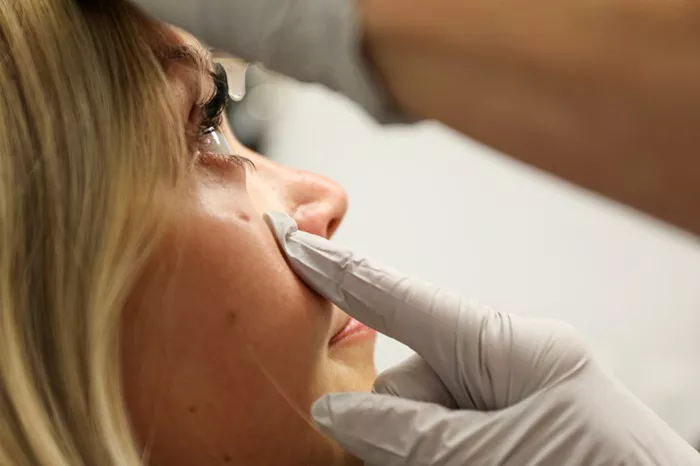Cuts and wounds are a common part of life. From small kitchen mishaps to accidental scrapes, dealing with cuts quickly and effectively is important to avoid infection and minimize scarring. Many people turn to natural remedies to support wound healing, and one of the most popular options is vitamin E oil. Known for its antioxidant properties and skin benefits, vitamin E oil is often recommended to help improve the appearance of scars and speed up skin repair. But is vitamin E oil truly good for cuts? Does it aid healing, or could it do more harm than good?
This article explores the role of vitamin E oil in treating cuts, how it works on damaged skin, the scientific evidence behind its benefits and risks, and the best ways to use it safely. Understanding whether vitamin E oil is suitable for your wounds can help you make informed decisions about your skincare routine and support faster, healthier healing.
What Is Vitamin E Oil and How Does It Work on Skin?
Vitamin E is a fat-soluble antioxidant found naturally in many foods and skin products. It helps protect cells from damage caused by free radicals, which are unstable molecules produced during normal metabolism or triggered by external factors like UV rays and pollution. Vitamin E oil is a concentrated form of this vitamin, extracted from natural sources such as wheat germ, sunflower seeds, or almonds, and is often used topically for skin care.
When applied to the skin, vitamin E oil can help moisturize and nourish the tissue. It promotes skin regeneration and may support the repair of damaged cells by neutralizing free radicals that interfere with healing. Vitamin E is also believed to improve blood circulation in the skin, which brings essential nutrients and oxygen to wounds, potentially accelerating the healing process.
However, the skin’s response to vitamin E oil depends on several factors including the type of wound, the formulation of the oil, and individual skin sensitivity. While vitamin E is widely praised for its skin benefits, its effectiveness on open cuts and fresh wounds is still debated.
Can Vitamin E Oil Help Heal Cuts Faster?
The idea that vitamin E oil speeds up cut healing is appealing, but scientific research presents mixed results. Some studies suggest that topical vitamin E supports the healing of minor wounds by reducing oxidative stress and promoting collagen synthesis, which is essential for skin repair. It may also reduce inflammation, which can otherwise slow healing and increase scarring.
On the other hand, clinical evidence on vitamin E oil’s direct impact on wound healing remains limited. Some experiments have found no significant difference in healing time or scar appearance when vitamin E was applied compared to untreated wounds. In certain cases, vitamin E oil has even been reported to cause allergic reactions or skin irritation, especially when used on fresh cuts.
Vitamin E’s moisturizing properties do help keep the wound environment hydrated, which is beneficial for healing. Dry wounds can crack and reopen, prolonging recovery. However, it is important to note that not all vitamin E products are created equal. Pure vitamin E oil can be thick and sticky, and using it improperly or in excessive amounts can trap bacteria or cause irritation.
In summary, while vitamin E oil may support the healing process indirectly by improving skin health, it should not replace standard wound care practices like cleaning, disinfecting, and using appropriate dressings.
When Is the Best Time to Use Vitamin E Oil on Cuts?
Timing is crucial when using vitamin E oil on cuts. Applying vitamin E oil immediately after getting a fresh cut is generally not recommended. At this stage, the wound is open and vulnerable to infection. The primary focus should be on cleaning the wound thoroughly, stopping any bleeding, and protecting it with sterile dressings.
Vitamin E oil is better suited for use during the later stages of healing, when the wound has closed and a new layer of skin has formed. At this point, applying vitamin E oil can help moisturize the area, reduce itching, and potentially minimize scar formation by supporting tissue remodeling.
Using vitamin E oil on healed or nearly healed wounds can improve skin texture and appearance. It can also soothe dryness and discomfort caused by new skin growth.
If you are unsure about when to start using vitamin E oil on your cut, consult a healthcare professional for guidance tailored to your specific injury.
How to Use Vitamin E Oil Safely for Cut Care
If you decide to try vitamin E oil for your cut, it’s important to use it safely and effectively. Start by choosing a high-quality product, preferably pure vitamin E oil or a reputable cream containing vitamin E as a key ingredient. Avoid products with added fragrances or harsh chemicals that might irritate sensitive skin.
Before applying, wash your hands thoroughly and ensure the cut is clean and dry. Apply a small amount of vitamin E oil gently to the healed or healing area. Avoid rubbing harshly or applying on open wounds.
Do a patch test first by applying a small drop on an unaffected skin area to check for allergic reactions or sensitivity. If redness, itching, or swelling occurs, discontinue use immediately.
For fresh cuts, focus on proper cleaning, antiseptic treatment, and covering with sterile dressings until the wound closes. Vitamin E oil can be introduced later as part of a scar care routine.
Maintaining overall wound hygiene and following your doctor’s advice are essential to prevent infection and promote smooth healing.
Alternatives to Vitamin E Oil for Cut Healing
If you are concerned about using vitamin E oil or want to explore other options, several natural and medical alternatives are effective for cut healing. Aloe vera gel is a popular natural remedy known for its soothing and anti-inflammatory properties. It can keep wounds moist and support skin regeneration.
Honey, particularly medical-grade honey, has antibacterial effects and promotes healing by creating a moist wound environment. It also helps reduce infection risk.
Silicone gels and sheets are often recommended by dermatologists for scar management after wounds have healed. They help flatten and soften scars over time.
Over-the-counter antibiotic ointments like Neosporin protect wounds from infection and keep the area moist for faster recovery.
Choosing the best product depends on the wound type, skin sensitivity, and personal preferences. Consulting a healthcare provider can help tailor the treatment to your needs.
What Are the Risks of Using Vitamin E Oil on Cuts?
While vitamin E oil is generally safe for most skin types, it carries some risks, especially when applied incorrectly. Allergic contact dermatitis is one of the most common problems, causing redness, itching, and rash. This is more likely in people with sensitive skin or those who apply the oil on open wounds.
Using excessive amounts of vitamin E oil can clog pores and trap bacteria, increasing infection risk. It may also interfere with the natural drying process of wounds, which is necessary for proper healing.
There is a misconception that vitamin E oil can completely prevent scars, but scars form as part of the body’s natural healing mechanism. Vitamin E may improve scar appearance but cannot erase scars entirely.
If you experience any adverse reactions after applying vitamin E oil, stop using it immediately and seek medical advice.
Conclusion
Vitamin E oil offers several benefits for skin health, including antioxidant protection and moisturizing effects, which can indirectly support the healing of cuts. However, its direct role in speeding up wound healing or preventing scars remains uncertain. Using vitamin E oil too early on open cuts can cause irritation or increase infection risk.
The best approach is to follow proper wound care first, including cleaning, disinfecting, and protecting the cut. Once the wound has closed, vitamin E oil may be helpful in moisturizing and improving the appearance of scars. Always use it cautiously, do a patch test, and consult a healthcare professional if needed.
Natural remedies like aloe vera and medical treatments like silicone gels also provide effective alternatives. Ultimately, safe and effective cut healing depends on timely care, cleanliness, and patience.
If you want to incorporate vitamin E oil into your skincare routine for cuts, understanding how and when to use it will help you get the most benefits while minimizing risks. Your skin’s health and healing deserve careful attention and informed choices.





























